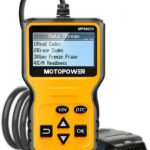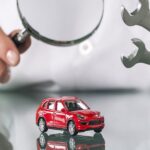You may settle your mind about buying a second-hand car due to economic constraints or improving your driving skills. Whether the reason for buying, it can be a great deal to get on the road without spending hefty bucks on the new car.
But finding a reliable second-hand car is a tricky task. Good research and investigative skills help you to own a trouble-free used car. You have to be aware of how to detect potential problems, and this is the only way that can save you from pricey automotive headaches. Here we have provided a detailed guide on what to look for when buying a second-hand car.

Check Car’s Exterior & Interior
Have a look around the outside and inside of the car. It is the most obvious inspection you can do for the first time. Keep an eye to observe any scratches, dents, or rusty spots. Small rusty and dent spots won’t make any difference. But if you find larger rusted metal, then you should reconsider your choice.
You should check the body panels are lined-up evenly. If they are uneven, understand it indicates that the car may go through an accident and not be repaired well. Make sure you check the doors and hoods thoroughly, and they move smoothly.
Look for signs of crash damage or poor repairs, body panel’s uniform color, seals, plastic trims, and evidence of overspray glasses. Take a glance at the interior of the car. Investigate the upholstery and check for rips, tears, and holes. If the owner is a smoker, you may see burn spots or a bad odor. In this case, you need to haggle some money off for the repairs.
Investigate Engine

Cars are inextricably linked to their engines. It can put up lots of wear and tear. A dirty engine may indicate vehicle damage; sometimes, a sparkling engine can be undertaken to disguise defects.
Look for black soupy oil, petrol leaks, oil streaks, and damaged hoses. There is another way to check out the health of the engine. Remove the oil filter caps and see if any large amount of gas is emitted from the engine. Especially blue smoky is a sign of a badly worn engine.
Time Chain Issue
A timing chain synchronizes the opening and closing of the valves in the internal combustion engine. The chain has several links, and they run seamlessly over gears. But an excessive amount of wear and tear can cause problems in this part. It is a major consideration while buying a used car like Range Rover. Since the manufacturer uses a special system called “Variable Valve Timing” (VVT), timing chain issues are common on Range Rovers.
If the engine misfires repeatedly or there is a rattling sound, indicate a timing chain issue. The rattling sound is a matter of concern while the engine starts and disappears after some time. Loose parts in the combustion system can cause any rattling sound, and it is best to investigate.
Leaks
Different types of fluids are run around and under the engine. A good engine shouldn’t leak fluid. It is a red flag for repairing if you see any fluid leaking. Check the underneath of the car and spot the signs of oil leaks. Oil leaks cause sludge under the car.
Also, take the bonnet open and examine the engine. Black fluid around the engine points to oil leaking. On the other hand, pink, green, and yellow fluid indicates a leak in coolant, also known as antifreeze. The gearbox and power steering fluid has a reddish-brown color.
If you spot any oil leaks, you should insist the seller fix the part. Moreover, you may consult with a mechanic to know the exact problem and repair cost.
Wheels & Tires
Make sure the used car already includes a decent set of tires. If there is any fault, it can be costly to repair. So check all four wheels, and even spare wheels, and look for damage signs. Used cars may have grazes on the tires, but it is no big deal. But large dents or bent wheels need replacing.
Mileage
Now, it is time to check the mileage as advertised. Turn on the ignition and observe if there are any warning lights. Typically, most cars stretch about 20000 km every year. To find out the exact mileage, split the number on the odometer by the car’s age. A high mileage car means more wear and tear on the mechanical components.
Don’t Forget To Take A Test Drive
After visual checking, the most obvious step is to take a test drive. It is a must-act while buying a used car. Run the car at different speeds and listen to the engine noise. Also, make sure of the responsiveness of the brakes and clutch.
Conclusion
The above consideration is instrumental when buying a second-hand car. After checking these options, if all the outcomes are decent, you may proceed to purchase the car. Furthermore, you must study the car’s history and other documents too.








